
War of Drones: what kind of ‘kamikaze’ drones Ukraine and Russia use
Last year, terms such as "shahed" or "moped" entered the vocabulary of every Ukrainian. Kamikaze drones are now commonplace both at the front and far in the rear
Expreso talks about the kamikaze drones used in the Russian-Ukrainian war, their types, technical characteristics, and explains how best to act to protect yourself from them.
What are kamikaze drones
Kamikaze drones are also called barrage (flying) munitions. These are unmanned aerial vehicles with an integrated warhead. They are capable of staying in the air near a target for a long time in standby mode, and then, after receiving an appropriate command from the operator, quickly attack or perform tasks set by the algorithm.
Kamikaze drones occupy a niche between cruise missiles and unmanned aerial vehicles, sharing characteristics with both. They differ from cruise missiles in that they are designed to move around the target area for a relatively long time, and from conventional UAVs in that they have a built-in warhead. They are called unconventional long-range weapons.
The idea of creating barrage munitions arose in the late 1970s, and the first samples of this weapon were introduced in the 1980s.
Ukraine uses 9 models of kamikaze drones. The Ministry of Defense reported 3 aircraft-type UAVs and 6 models of FPV drones.
Switchblade drones
The United States announced the transfer of Switchblade drones to Ukraine in the first month after the full-scale Russian invasion. Before Ukraine, the US had only supplied these drones to the UK. They are relatively affordable, but due to their small size, high speed, and silent flight, they are not vulnerable.
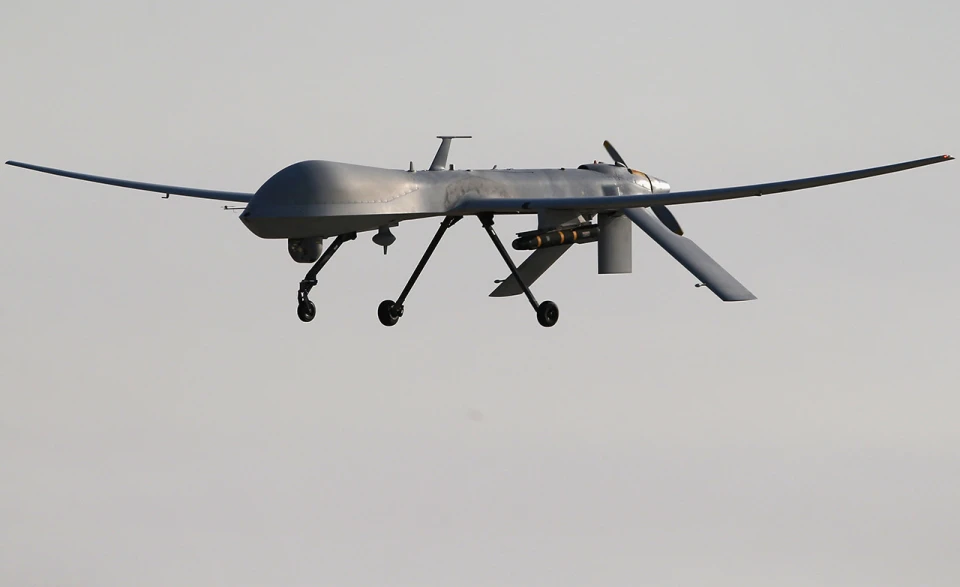
There are two types of these drones: the light Switchblade 300 and the heavy Switchblade 600. Switchblade 300 is used to destroy light armored vehicles and enemy manpower. The kamikaze drone is 61 cm long and weighs only 2.7 kg. Therefore, Switchblade 300 can be easily carried by one soldier. In the light version, this kamikaze drone can cover distances of up to 10 km, and its time in the air is 10 minutes, Defense Express explained. Targets can be destroyed either "online" by controlling the drone from a tablet or by pre-programming the destruction by coordinates. The warhead has an explosive charge equivalent to a 40-mm grenade. Interestingly, if necessary, the operator can change the target by canceling the previous attack. The Switchblade 300 is silent thanks to its electric motor and can reach speeds of up to 160 km/h.
Later, in September 2022, the US Department of Defense ordered Switchblade 600 for the needs of the Armed Forces. In the spring of 2023, the heavy switchblade was already used at the front. The Switchblade 600 is much heavier than the 300 - 23 kg. However, it is also portable and can be set up in 10 minutes. It is designed to fly up to 40 kilometers. It can cover this distance in 20 minutes, and then it can barrage in the air for another 20 minutes. The attack speed is 185 km/h, and the warhead of the "six hundredths" is used to destroy armored vehicles.
The Switchblade 600 can be mounted on a ground transportation platform in six sets, and can also be launched from the air, which means it can serve as an air-to-surface munition. This version can be equipped with an anti-tank warhead, but have a longer range and cost less than anti-tank missiles (e.g., Javelins). The touchscreen tablet-based control system can control the flight manually or autonomously, uses encrypted data channels, and is equipped with protection against electronic interception.
Phoenix Ghost drones
This is a tactical drone designed for warfare in flat terrain, like in Donbas, for example. The system was developed in the US and this drone is similar to the Switchblade. It can be used to obtain an image of the terrain, but its main purpose remains to attack the enemy. "The Phoenix Phantom can take off vertically and fly for more than six hours. It is effective against medium-armored ground targets and is suitable for night use.
Apparently, these drones were used, for example, to destroy Russian TOR M2 and S-300VM anti-aircraft missile systems in the spring of this year. An important aspect that differs this drone from others, according to military experts, is its large angles of attack, which are unattainable for most kamikaze drones that have a flat flight path.
Phoenix Ghost remains an extremely secret project, with no mention of it even on the website of the developer Aevex Aerospace. Most likely, the "ghost" was developed as a tool to destroy enemy anti-aircraft missile systems.
Warmate kamikaze drones
This kamikaze drone was developed by the Polish company WB Electronics. It runs through a pneumatic launch from a container launcher. The device has an electric motor and a folding wing. The range is 10 km, and the duration of the barrage is half an hour. The normal flight altitude is 30-200 m, with a maximum altitude of 500 m also declared. The maximum speed of the Warmate is 150 km/h. The drone can have a takeoff weight of up to 4 kg, carrying up to 800 g of explosives.
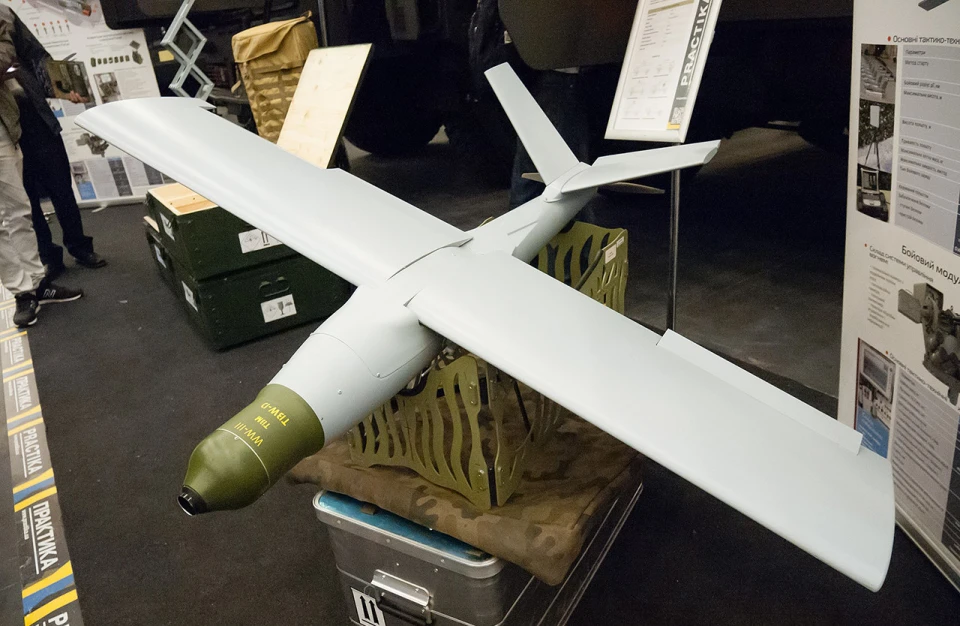
Warmate has an automatic flight control mode and a return system in case it fails. During the attack, the drone enters the target at its peak, reaching its maximum speed (150 km/h). Using the appropriate optics, the operator controls the attack. He can cancel the mission in the event of a strike maneuver and return Warmate to base.
There are three variants of the Warmate: portable, mobile (on a car chassis), and reinforced - based on a specialized armored vehicle. The latter option provides for a crew of 5 people and includes a ground control station, 12 UAVs (12 units), 24 combat units, a compressor, a high-pressure cylinder, 2 catapults, an electric fuel unit and a retractable mast for the antenna.
Ukrainian kamikaze drones
Among the domestic kamikaze drones, RAM II UAV should be noted. Ukrainians have been raising hundreds of millions of hryvnias a day for these drones. They are based on the Leleka-100 drone body. The drone has a range of 30 km and weighs 8 kg (including a 3-4 kg warhead). The deployment time is 10 minutes. If the UAV is not destroyed during the mission, it can be reused. RAM II can reach a speed of up to 70 km/h and can reach an altitude of 1000 meters.
The RAM II UAV's warhead can be of three types: high-explosive, thermobaric, or cumulative. The high-explosive fragmentation munition is designed to hit manpower in open space and destroys manpower in a 15×3 meter area with the help of one and a half hundred fragments. The armor-piercing round penetrates armor up to 40 mm and can be used against light armored vehicles. The thermobaric warhead is designed to destroy targets inside buildings and small armored vehicles. It is most effective when used against enemy fortifications. The lethal force of the thermobaric charge extends within a radius of 15 meters in open space.
The ST-35 Silent Thunder drone is designed to destroy a target by self-destruction. The complex has a unique way of launching with the help of an auxiliary multicopter. It vertically lifts the munition to a height of 500 meters, after which it disengages and heads to the target area. The multirotor itself rises further to an altitude of about 1000 meters and remains in the air, acting as a signal repeater, maintaining stable communication with the barrage munition at a distance of up to 30-40 km.
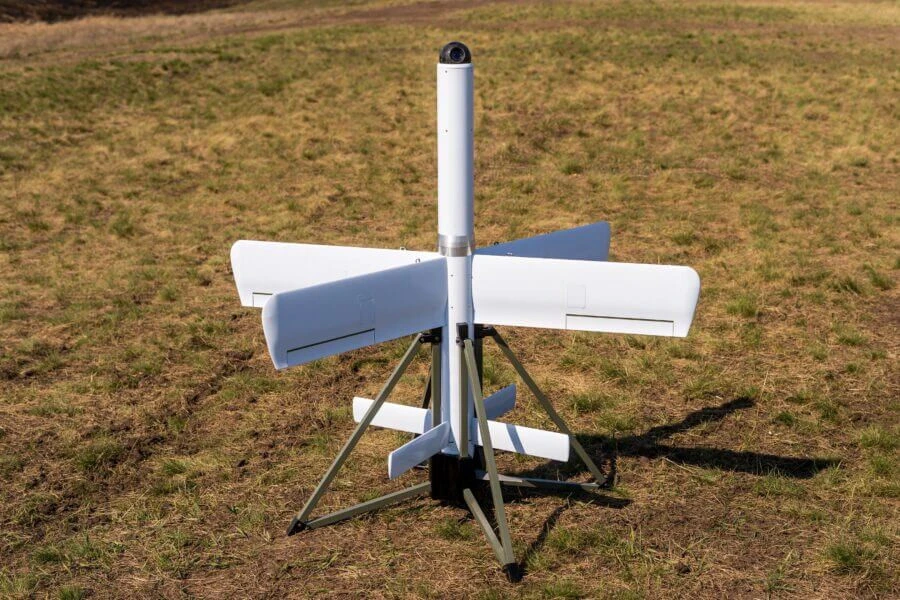
The cruising speed of the "Thunder" is 120 km/h, it can stay in the air for up to an hour, and its range is 30-40 km. The drone's warhead weighs 3.5 kg.
In addition, there is information about the Beaver kamikaze drone. The first evidence of this drone appeared in 2022, when volunteers raised funds for Ukrainian-made strike UAVs for the Defence Intelligence of Ukraine. On May 30, 2023, these drones most likely struck Moscow and the surrounding area.
FPV drones
The name comes from the English First Person View. It refers to a new mass type of drone that is controlled through special glasses, hence the name. FPV mode transmits video from the camera in real time. The operator sees the terrain through the goggles as if he were sitting inside the UAV. Such drones can reach speeds of over 100 km/h.
These kamikaze drones are fast, maneuverable, and can hit enemy vehicles even at full throttle or fly into manholes or narrow windows. Ukraine produces thousands of such drones per month.
Pegasus drone
"Our main drone is the Pegasus. There is also a Bucephalus variant. This is a 10-inch drone that can currently lift up to 2 kg. The maximum flight range at which a hit is recorded is 17.4 km," said one of the manufacturers.
The equipment is ordered in China and Europe, and then the drones are assembled, depending on the needs of the military. The cost of such a device is $300-500, and it can hit armored vehicles worth millions, even a tank.
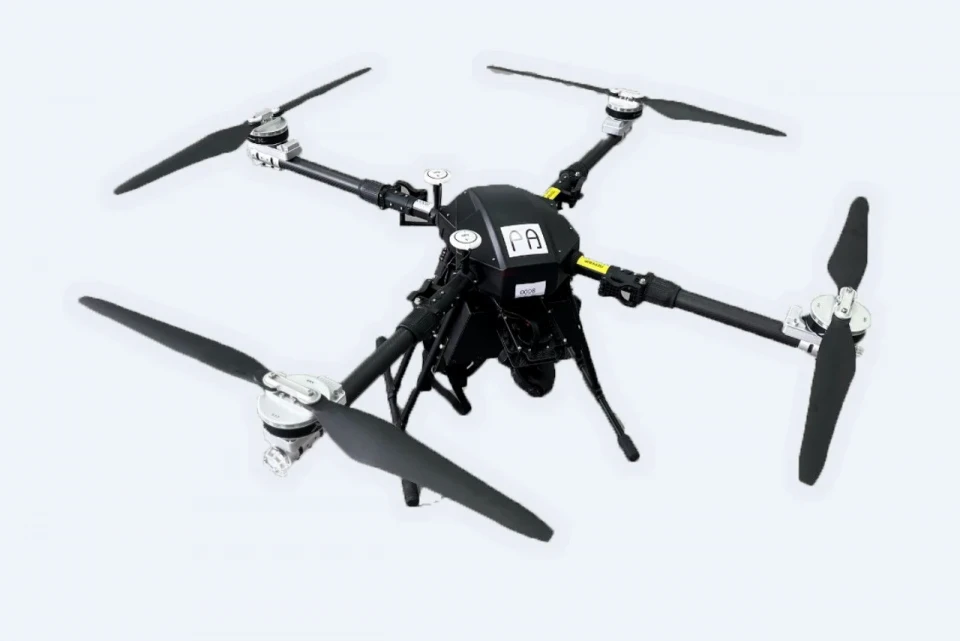
"For kamikazes, we use a load of 1-1.2 kg. The most powerful is a tank. If you properly analyze the point of this tank, analyze its weak point. If it's standing and not moving, you can hit it," Radio Svoboda quoted a drone operator from the 24th Mechanized Brigade as saying.
The Security Service of Ukraine also reported the destruction of a heavy mortar system "Solntsepyok" by a drone.
"Drones are more difficult to detect than Shaheds. Because Ukrainians have the ability to fly very low (15 meters). With a load of 1 kg of explosives or munitions, the flight range is 3-12 km (the most comfortable distance is 3-6 km)," a fighter with the call sign "Gagarin" told the telethon.
The Russian Lancet kamikaze drone
As for the enemy's kamikaze drones, the most dangerous of them is the Lancet, introduced in 2019.
The airspeed is up to 300 km/h, the flight radius is up to 40 km, and it can reach an altitude of up to 5 km. The maximum weight of the drone is 12 kg, including an explosive payload of up to 5 kg.
Usually, Lancets operate in tandem with Orlan-10 UAVs, which conduct reconnaissance and provide coordinates for Lancets to attack. Starting in the fall of 2022, Russian propaganda has often disseminated videos of Lancet drones hitting Ukrainian air defense systems, artillery pieces, howitzers, etc. However, the warhead of this kamikaze drone is often not enough to destroy or disable military equipment.
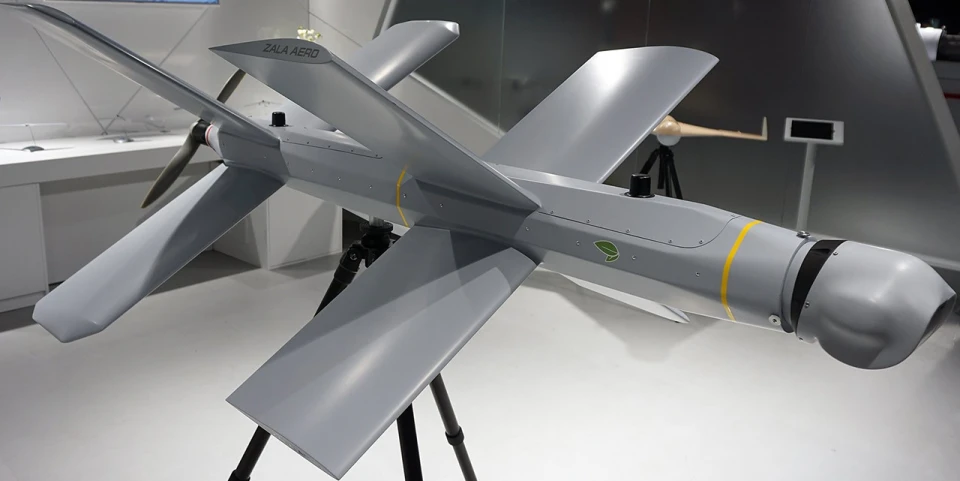
Ordinary nets stretched at a certain height have proven to be an effective means of defense against Lancets. This method of fighting drones has been successful on several occasions. Experts, however, emphasize that it is possible to fight Lancets, but only until the drone has captured the target. Once it has locked on to a target, it is extremely difficult to neutralize it.
The Lancets are manufactured by the Russians, and they claim to be mass-produced. Russia obtains the components for production through parallel imports and ineffective sanctions. In an interview with the BBC, Yuriy Kasianov, commander of the Ukrainian Armed Forces' aerial reconnaissance unit, emphasized that the Lancet is 80% made of Chinese components.
Kub-BLA
The Kub-BLA delivers payloads based on manually set target coordinates or an image from a target payload. The advantages of the system are its hidden launch, bombing accuracy, silence, and simplicity of use.
The dimensions of the drone are 1210×950×165 mm. "The Kub reaches speeds of 80-130 km/h, can stay in the air for up to half an hour, and has a payload of 3 kg.
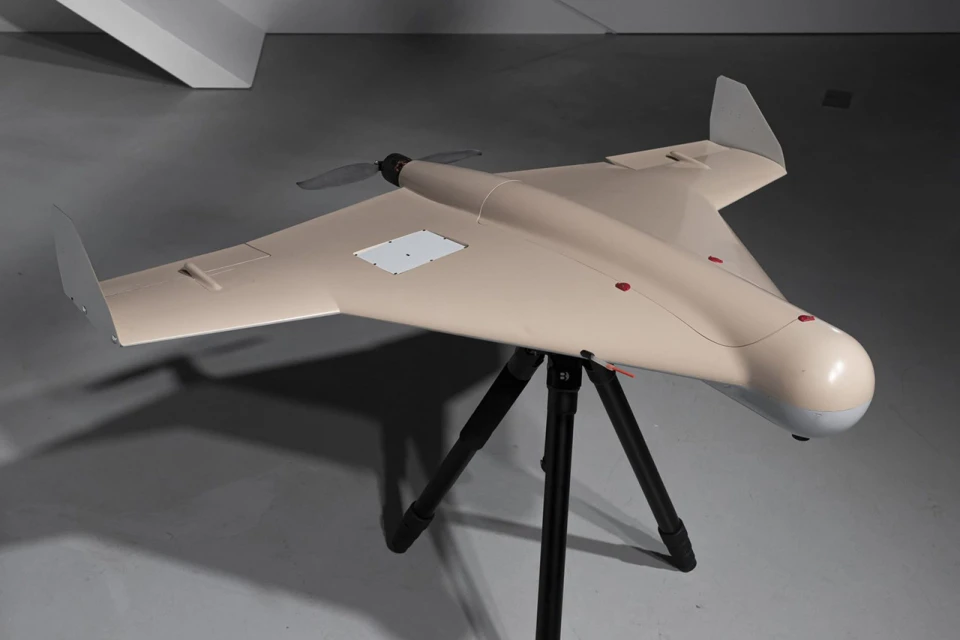
Iranian "Shahed" UAVs
The most famous among Ukrainians are the Shahed drones, popularly known as "mopeds" because of the specific sound they make when flying.
In mid-July 2022, a Russian delegation visited Iran, where they were presented with Iranian drones at the Kashan air base. And in August, Western intelligence reported the transfer of hundreds of drones to Russia. President of Ukraine Volodymyr Zelenskyy said that Russia had ordered 2,400 "Shaheds" from Iran.
Among the Iranian models, the Shahed-131 and Shahed-136 are kamikaze drones. "The Shahed-136 (first introduced by the Iranians in 2020) is labeled by the Russians as the Geranium-2. The effective range of the Shahed-136 is likely to be from 1000 km (the declared range is 2500 km). This drone can deliver a warhead of up to 50 kg (the total weight of the drone is 200 kg). The cruising speed of the drone is 180 km/h, and it flies at an altitude of 60 m to 4 km.
"The Shahed is guided to a stationary target by satellite coordinates; it cannot find targets on its own, nor can it attack moving objects. The target is hit by a warhead in the nose of the drone. The drone is launched from a launch platform. A UAV has an engine that helps it gain speed and height.
This drone can be detected by radar and destroyed by any air defense system. In addition, running on a reciprocating gasoline engine, the drone generates considerable noise, which helps to detect and shoot it down. Sometimes this can be done with conventional small arms.
The modifications of the Shaheds used in Ukraine are designed specifically to cause as much damage to infrastructure as possible, CNN reported. However, Russia is actively using Iranian kamikaze drones to attack civilians. Russia does not plan to stop with the purchase of "mopeds". The aggressors want to launch the production of Shaheeds on their territory.
How to protect yourself during a drone attack
If you hear a sound that sounds like a moped or chainsaw engine, assess the situation and try to stay away from administrative buildings, strategic and military facilities.
Find a shelter and try to wait out the attack there, or follow the "two walls" rule.
If you are under fire on the street, find any ledge, depression in the ground, or ditch. Lie down, cover your head with your hands and open your mouth.
Indoors, choose a place in a corner and near an exit to leave the building immediately if a shell hits.
Stay in the shelter for at least 10 minutes after the shelling ends. Do not stay in the vehicle during the shelling.
Do not try to shoot down the drone yourself with your own weapon within the city, as this can lead to tragic consequences. Rely on the military and law enforcement.
- News













































